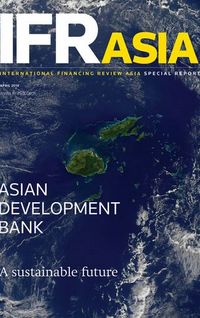The Asian Development Bank has a broadly stable outlook on Asian economic growth, seeing a slight decline to 5.7% this year from 5.9% in 2018.
The future of global trade, however, remains the “key uncertainty”, according to Yasuyuki Sawada, the bank’s chief economist.
“Tensions between the US and China are still very high,” he said.
Negotiations between the two economic powers have so far failed to produce much progress, even though the talk of escalation that dominated 2018 has softened. The challenge for economists, then, is that either outcome – a further escalation or prompt resolution – could have a big impact on their trade assumptions.
Sawada, however, does not appear too concerned, noting that discussions could yet bring about a positive surprise.
“The uncertainty is over which scenario will materialise,” said Sawada. “Earlier settlement of the trade dispute will generate a positive impact, so there is also a potential upside.”
Even in the worst case, the ADB sees little risk of a serious hit to Asia, estimating that a mutual 25% tariff on US and Chinese imports would cause a modest 1% hit to Chinese GDP over two to three years.
That is a more sanguine view than that of the International Monetary Fund, where managing director Christine Lagarde said in April that tariffs on all US-China trade would put 0.8 percentage points of global growth at risk.
More concerning is the growing evidence of a slowdown in major western economies, which remain an important source of final demand for Asia – even though domestic consumption now accounts for over 50% of Asian GDP growth.
Global trade growth has turned negative, and global PMI readings are trending down.
“We see overall global trade shrinking, although we are not attributing this 100% to trade tensions or policy change, but rather there is a global cycle. This global cycle in production seems to drive more of this downward move,” said Sawada.
“Overall developed economies are slowing down, and that is one of the main driving forces for why Asian growth is moderating.”
NO RECESSION
An inverted US yield curve has renewed concerns that the world’s biggest economy may be heading for a recession as the effects of President Trump’s tax breaks wear off. Economists do not see that as a given, however.
The ADB expects growth in the US, the eurozone and Japan to cool to 1.9% in 2019 and 1.6% in 2020.
“Our baseline is for a slowdown. Relatively rapid growth in the US last year was bolstered by the effects of fiscal stimulus, and we’re expecting that to fade somewhat,” said Joe Zveglich, deputy chief economist. “But not to the point that the US falls into recession.”
Zveglich expects the Federal Reserve to keep rates steady this year, rather than reverse course.
“The state of policy is going to be a bit softer this year than we might have expected in around September last year, but not such that it will provide a big push to the economy.”
Closer to home, there are few visible risk factors within Asia that could derail confidence across the region. While cooling Chinese growth continues to raise concerns among international investors, Sawada argues the overall picture is stable.
“Shadow banking credit is shrinking and total social financing is slowing down, which indicates the effectiveness of Chinese government policy at heading off financial system risks in general,” he said.
Debt and default risks in China are also likely to be contained in the domestic financial system, given that most of the debt is in local currency and the country’s centralised government has more capacity than most to tackle non-performing loans and ensure stability.
“You would need a very large and sustained shock to throw off global growth,” said Zveglich. “While there might be some regional spillovers, because Chinese demand is important, the government still has the fiscal space to take some of the debt issues on.”
Elections across the region – with the potential for leadership change in India, Indonesia, Thailand and Bangladesh in the space of a few months – do not pose a major risk. Last year’s shock result in Malaysia did delay investment decisions, and a rethink of major projects and government borrowing will have a lasting impact on economic output, but the baseline assumption is for a smooth transition across the region.
“These countries are trying to facilitate more fiscal investment in order to reduce the infrastructure investment gap, so overall I expect growth will continue despite the political cycle,” said Sawada.
To see the digital version of this roundtable, please click here
To purchase printed copies or a PDF of this report, please email gloria.balbastro@tr.com


